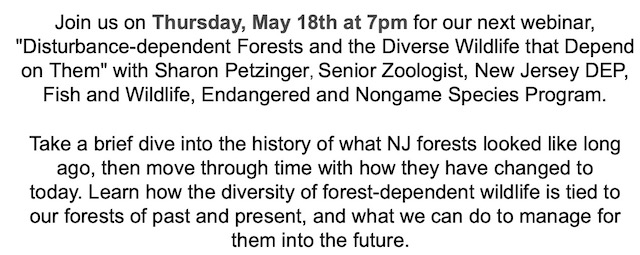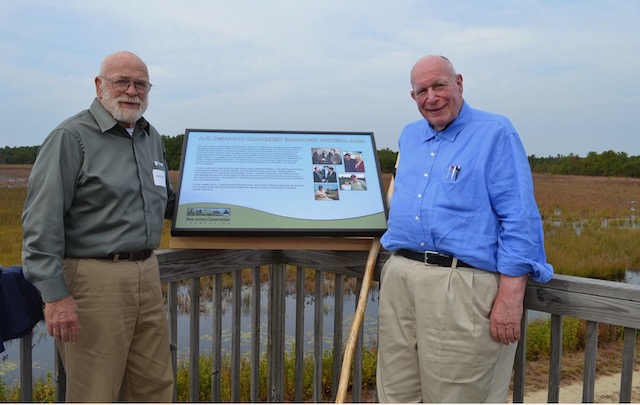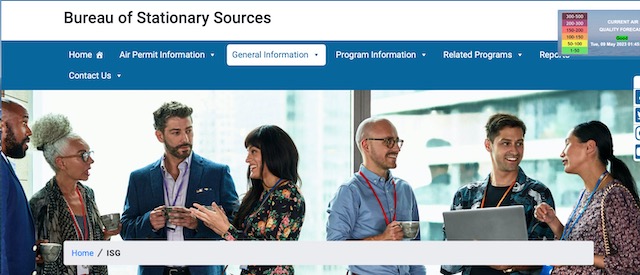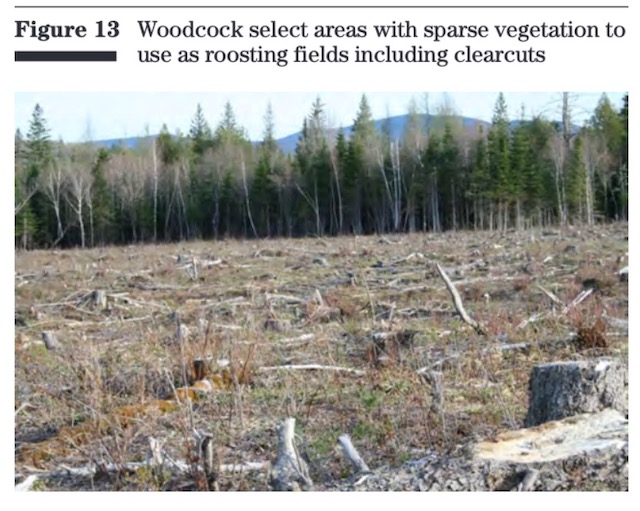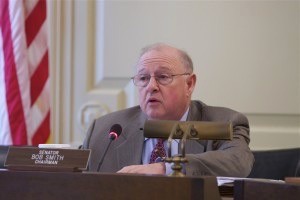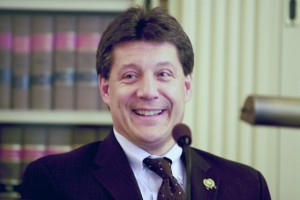Murphy DEP Working With Forestry Industry To Promote The “Young Forests” Policy That Led To Glassboro Clearcut
DEP Lobbying With Loggers In Advance Of Introduction of Senator Smith Legislation
Murphy DEP Commissioner Urged To Rein In Rogue Staffer
Dangerous Clearcuts To Create “Young Forests” Campaign Underway
This logging industry campaign must be exposed publicly by the media and stopped before the next version of Senator Smith’s legislation is introduced.
The DEP staffer who has been leading DEP’s controversial “Young Forests” initiative is working with the Forestry industry to lobby in support of that initiative. What is the “Young Forests” initiative you ask?
DEP’s Sharon Petzinger is scheduled to speak at a May 18 NJ Forestry Assc. event to promote “Young Forests” (under the cynical guise of “backyard forestry”):
That “brief dive” Ms. Petzinger will take is almost verbatim the political talking points in support of the “Young Forests” campaign, as I document below.
In a subsequent post, I will provide the letter I just sent to DEP Commissioner LaTourette demanding that Petzinger’s presentation be cancelled due to its highly inappropriate political lobbying nature.
For today, I want to focus on the origins and threats of the “Young Forests” initiative.
Ms. Petzinger, with the support of current DEP Assistant Commissioner John Cecil, has been championing “Young Forests” for years, especially at Sparta Mountain Wildlife Management Area (WMA).
Mr. Cecil previously was head of forestry at NJ Audubon, where he wrote the Sparta Mt. WMA logging plan and another “Young Forests” oriented forestry plan on Wall Street billionaire Peter Kellogg’s Hudson Farm (with over a $330,000 Kellogg grant.)
Kellogg has close ties to NJ Gov. Murphy and his wife Tammy). Cecil’s fellow “Young Forest” advocate and colleague at NJA, Don Donnelly is now at USDA/NRCS and DEP documents reveal that he made inquires to DEP on the DEP clearcut at at Glassboro WMA. So the revolving door and all kinds of personal, organizational and financial connections are surfacing behind the scenes.
The implications of the “Young Forests” initiative were clearly exposed in the DEP’s illegal clearcut of over 20 acres of forested wetlands in the Glassboro WMA. Basically, using “Young Forest” pseudo-science, DEP thinks it is OK to clearcut mature forests to create “Young Forest” habitat for certain species, typically game species to appease the hunters lobby.
I explained the flawed science and threats to NJ’s forests posed by the “Young Forests” campaign in this recent post, see:
In addition to my criticism of the US Fish and Wildlife Service and DEP plans to implement the “Young Forests” initiative, a recently published scientific paper by 6 renowned forest ecologists severely criticized the science supporting that logging program and explained the political special and public relations promotional campaign pushing the “Young Forests” program, see:
1.2.1. Genesis of the campaign and the “Young Forest Initiative”
A concerted campaign is working to slow and reverse the natural decline in early-successional habitat and species that accompanied the regional reduction in deforestation, intensive forestry, and agriculture. This campaign is promoting early-successional habitat through multiple activities: clearcutting, “group selection,” and other forms of patch clearfelling in established forests; intensive “mechanical treatments” such as brushhogging and mowing; and herbicide application and prescribed fire in successional habitats and younger forests, which are often accompanied by other mechanical treatments (DeGraaf and Yamasaki, 2003; Oehler et al., 2006; American Bird Conservancy, 2007; Schlossberg and King, 2007; King et al., 2011; Yamasaki et al., 2014).
These intensive management activities have long been advocated to benefit popular game species that favor early-successional habitats, such as the American Woodcock (Scolopax minor), Ruffed Grouse (Bonasa umbellus), and White-tailed Deer (Odocoileus virginianus) (Lenarz, 1987; Caron, 2009; Derosier et al., 2015). …
A key milestone in the genesis of this campaign was the 2008 American Woodcock Conservation Plan (AWCP; see Table 1 for Abbreviations), published by the Wildlife Management Institute (WMI) in collaboration with game management agencies and sportsmen’s organizations (Kelley et al., 2008). The goal is to increase American Woodcock populations to early 1970s levels by clearcutting 11.2 million acres of forest in the Northeast and Upper Great Lakes regions—an area larger than the state of Maryland. WMI also launched the Upper Great Lakes Woodcock and Young Forest Initiative (YFI) to gain public support for the creation of early-successional habitats in Michigan, Minnesota, and Wisconsin (Wildlife Management Institute, 2009, 2010).
The authors explain how this campaign was promoted:
Wildlife Management Institute (WMI) soon began expanding the YFI to a national campaign (Gassett, 2018; Weber and Cooper, 2019). Recognizing the controversial nature of such widespread forest-clearing, the organization hired a marketing firm to “shape an overall communications strategy” (Seng and Case, 2019). This firm administered opinion surveys and focus groups that showed most forest landowners value beauty, scenery, nature, and biodiversity far more than logging or financial return. A plan was then devised to promote early-successional habitats through an extensive network of partnerships. Terms which focus group participants found unappealing, such as clearcutting, early-successional habitats, shrub, and scrub, were replaced with the more appealing “young forests.” Simple and positive language emphasized forest “health,” wildlife, habitat diversity, and scientific-sounding outcomes. A pseudo-historical pitch was crafted to emphasize the decline of once common and familiar species without acknowledging the highly artificial and historically anomalous nature of their former abundance (see Table 2 for more details). Numerous publications were produced, such as, “Talking About Young Forests,” to help “natural resource professionals…effectively advocate for creating and managing young forest habitat on public and private lands” (Oehler et al., 2013).
The authors then name the financial supporters and participants in the campaign, which explicitly include the NJ DEP, Division of Fish and Wildlife:
In 2012, YFI inaugurated the “youngforest.org” website, aimed at persuading target audiences to support the campaign (Young Forest Project, 2012). Within a decade, the YFI had recruited more than 100 “partners” (Supplementary material 1, Young Forest Project, 2022a). These are primarily traditional forestry and game species management interests, such as timber companies (Lyme Timber Company, 2017; Weyerhaeuser Company, 2020), federal and state forestry agencies (New York Department of Environmental Conservation, 2015; USDA Forest Service, 2018), federal and state wildlife agencies (U.S. Fish and Wildlife Service, 2015c; Connecticut Department of Energy and Environmental Protection, 2021b), and sportsmen’s organizations (Russell, 2017; Weber and Cooper, 2019). All of these partners benefit from forest-clearing through increased profits from timber sales, larger agency budgets, more staff, direct payments for creating young forest habitat, or elevated populations of desired game species (see Supplementary material 1 for state-by-state examples of forest-clearing).
The YFI has attracted generous financial support from a wide range of public agencies, private organizations, and large corporations such as Richard King Mellon Foundation, U.S. Forest Service, U.S. Fish and Wildlife Service, American Forest Foundation, and Shell Oil Company [see Connecticut Department of Energy and Environmental Protection (2018); New Jersey Audubon (2018);National Fish and Wildlife Foundation (2022b)]. In addition to activities on public lands, money is directed to land trusts (New England Cottontail, 2021) and private landowners (Natural Resources Conservation Service, 2018) through numerous state and federal sources. Much of this activity, supported by the significant money available for forest-clearing for early successional habitats (American Bird Conservancy, 2015; Natural Resources Conservation Service, 2019; Ruffed Grouse Society, 2022), engages broad support by well-intentioned landowners and conservationists by portraying this clearing as “restoration” to retain or save declining species (Smith, 2017; Weidensaul, 2018). There is little acknowledgment that, although these species are truly declining, they were artificially elevated in their abundance by colonial and relatively modern land-use practices that were abandoned in 19th and especially the 20th century.
So this is the national forest logging campaign that is now threatening NJ forests.
An intense lobbying campaign is now underway – with active NJ DEP support – in advance of Senator Smith’s forestry legislation, expected to be introduced in June.
This logging industry campaign must be exposed publicly by the media and stopped before Senator Smith’s legislation is introduced.
